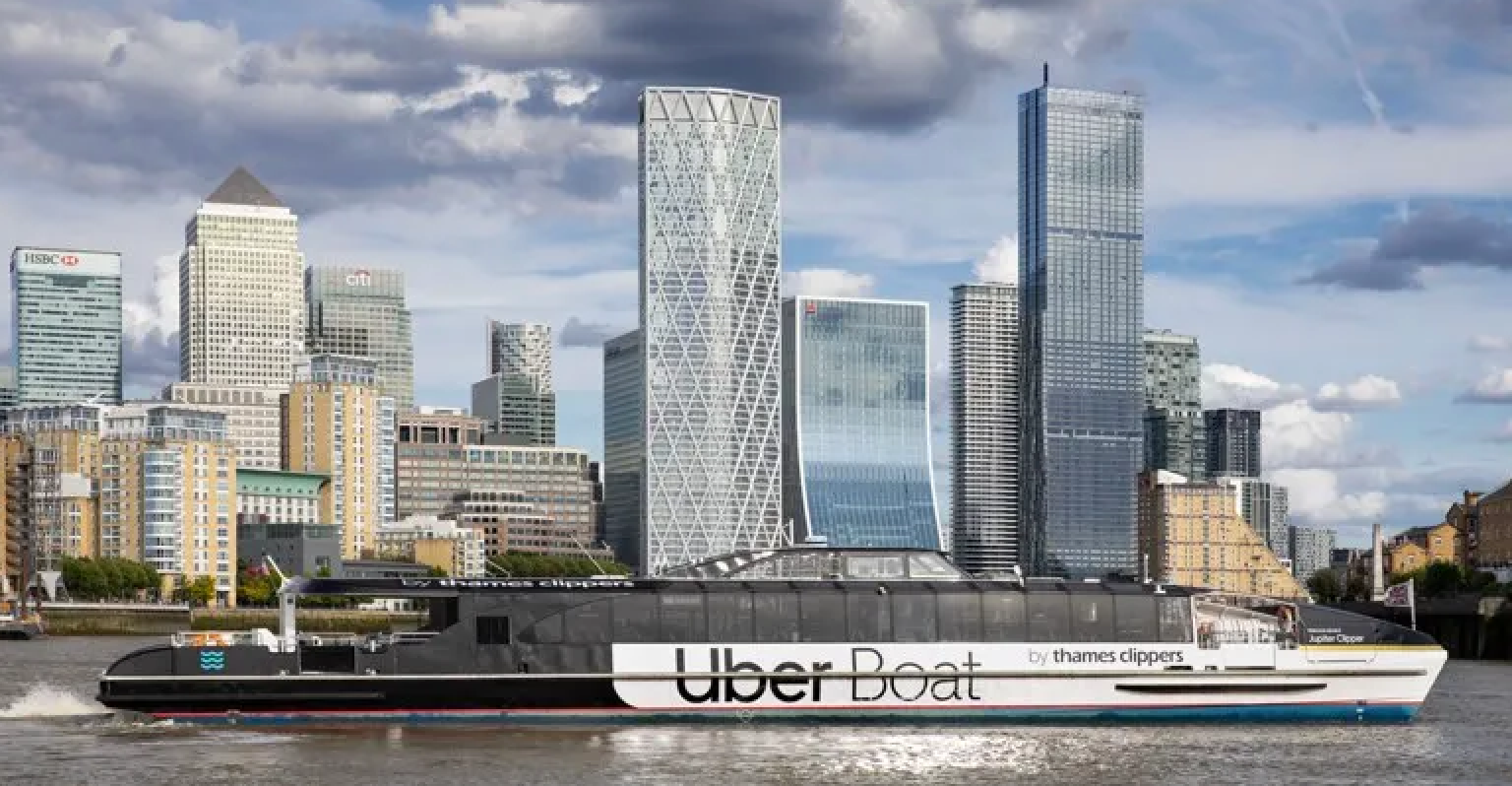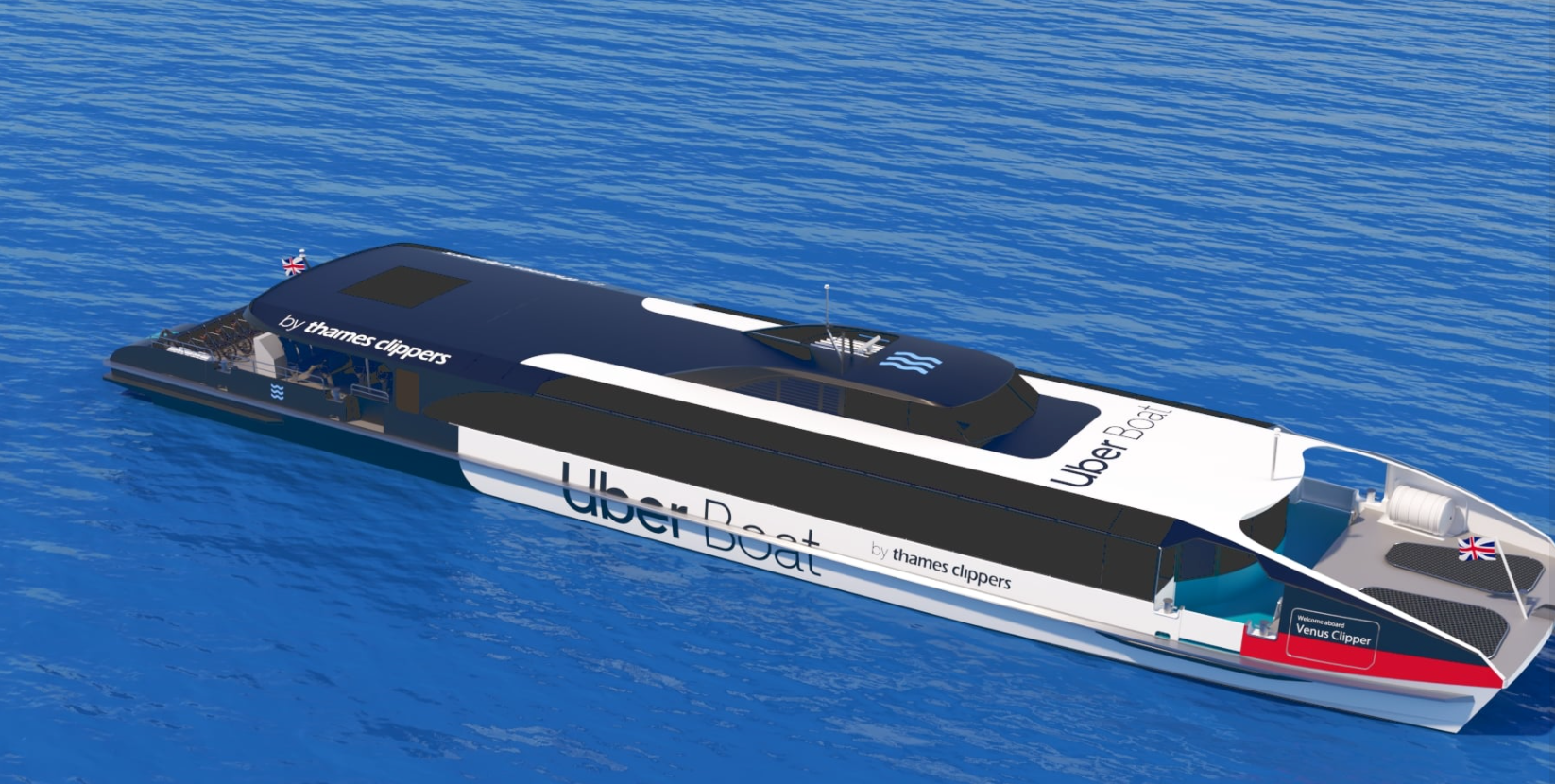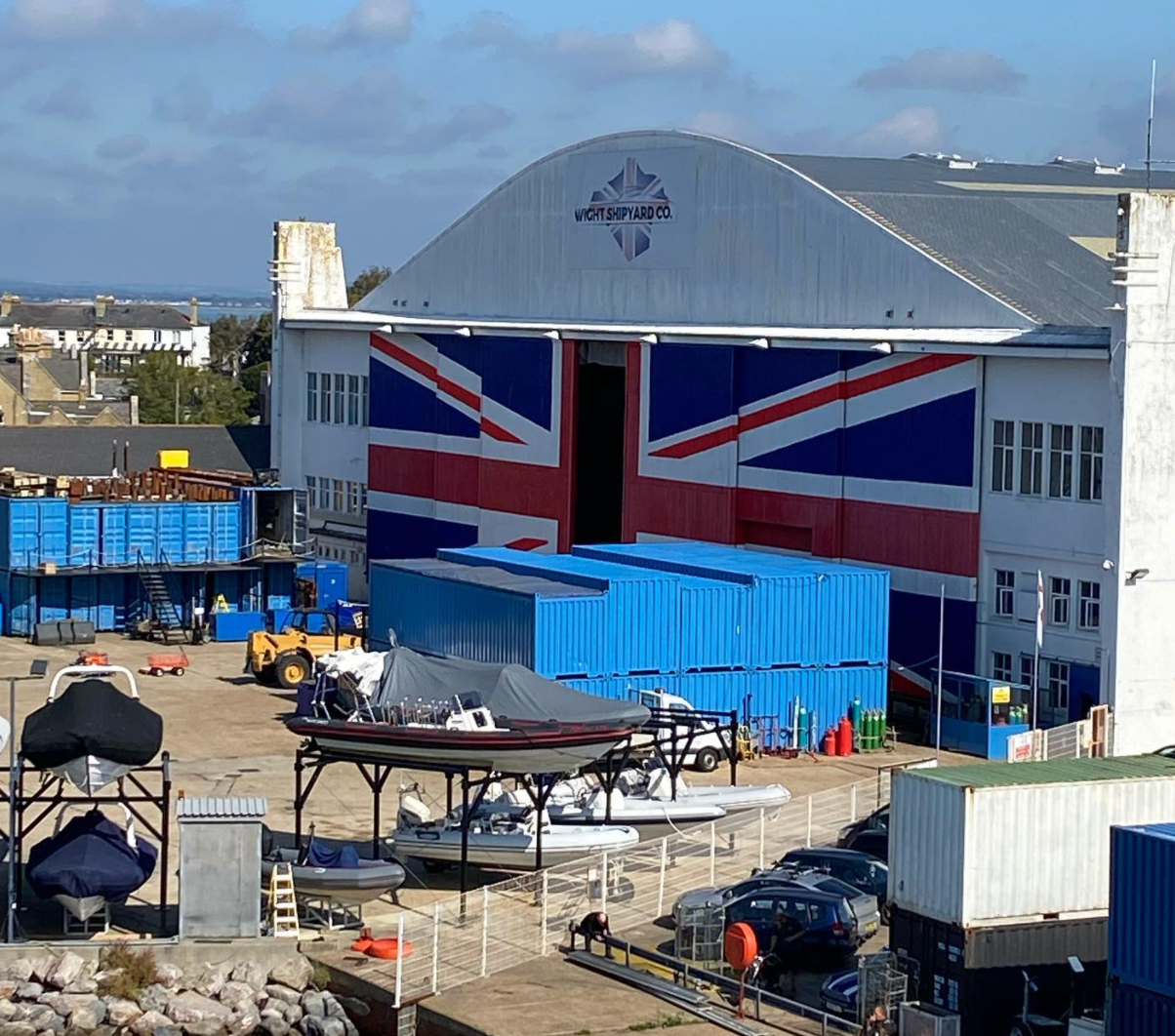New Uber Boat Hybrid Ferries in 2022 for London Commuters, Tourists

New high-speed Uber Boat hybrid ferries being built by Wight Shipyard will bring a new era to Thames River travel with two boats running all-electric between Tower Bridge and the Battersea Power Station.
Background: In August of 2020 the on-land ride-sharing service announced a partnership with London ferry company Thames Clippers. There was no change in ownership. Multinational conglomerate AEG, which also owns and operates the city’s O2 stadium, retain the majority stake in what is now called Uber Boat by Thames Clippers.
The main difference for Londoners was that the company’s commuter ferries would be fully integrated with the Uber app, making it easier to link land and water trips. The company’s fleet also takes visitors on sightseeing trips through the heart of the city and its famous landmarks down to Greenwich.

Uber Boat Hybrid Ferries Funded Through Dept. of Transport
In September 2021 the company announced funding from the Clean Maritime Demonstration Competition undertaken by the UK Department for Transport (DfT) and Innovate UK to support three projects looking at the decarbonizing of the Thames:
- Clipper 2.0, a study of the economic and technical feasibility of three zero carbon fuel types — compressed hydrogen gas, liquid hydrogen and methanol.
- Project HOST (Hydrogen and Oxygen South Thames) concentrated on how Uber Boat by Thames Clippers could transition from diesel engines to vessels that use hydrogen fuel cell, batteries and electric motors over the next 10 years.
- Cross River Zero Emissions Ferry, a feasibility study that looked at the relationship between power demand, duty cycle and vessel optimization for more efficient vessel operation to develop a clear plan to achieve Net Zero by 2050.

This last initiative was undertaken in collaboration with Wight Shipyard, which has worked with Thames Clipper for many years and is building the new Uber Boat hybrid ferries. The study also looked at the feasibility of integrating fuel cell electric drive systems into the company’s existing fleet.
The first outcome of all this is that the hybrid design coming into service in 2022 allows the high speed vessels to operate solely on battery power while transporting commuters and sightseers through the Capital – throughout the Central Zone, between Tower and Battersea Power Station piers – and recharge while using biofueled power outside of central London.
Net Zero For All New Builds by 2025
The company says the technology is not reliant on shore-based charging. The new boats will use excess power from the biofueled engines to re-charge the batteries for the central London stretch. The company is committed to achieving net zero with all new builds by 2025 and 2040 for its wider fleet, infrastructure and environmental footprint.
Sean Collins, Uber Boat by Thames Clippers’ co-founder and CEO, said “For over 20 years we have been at the forefront of innovation for the river marine sector and this development in technology has enabled us to take the first major steps to meet our future environmental vision.”

Uber Boat by Thames Clipper has the largest fleet on the River Thames, with a total of 20 vessels that can carry anywhere from 12 to 220 people. The speed range is just as wide – from 30 knots for their latest high speed vessels to 8 knots for the Twinstar Clipper, which has been helping people cross the Thames for over 40 years.
The commuter ferries call at 23 piers across London, departing every 10-20 minutes during commuter times from major piers like Canary Wharf, London Bridge City, Battersea Power Station and the London Eye (Waterloo).
“We’re looking ahead with this Uber Boat hybrid ferries design, ensuring easy conversion to green hydrogen or another renewable energy source — something we’re also focusing heavily on with the new projects we’re undertaking — the next step in our strategy to net zero and, ultimately, tailpipe zero.”